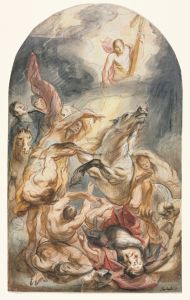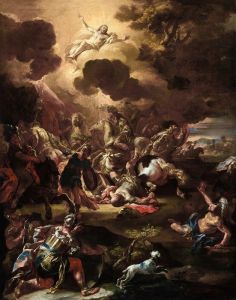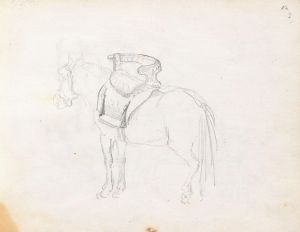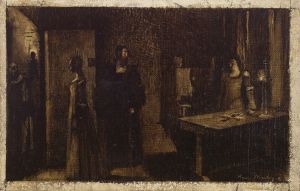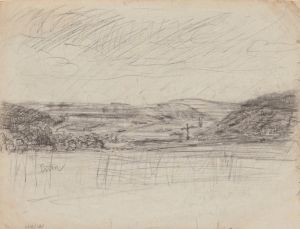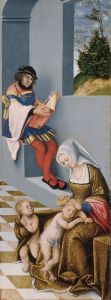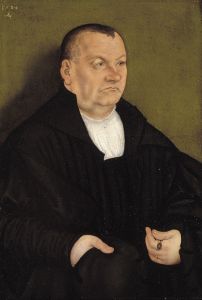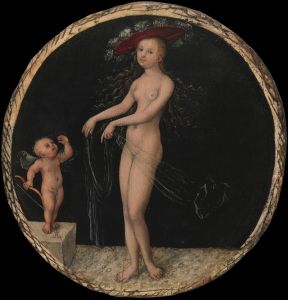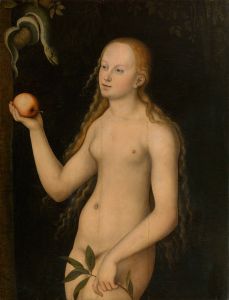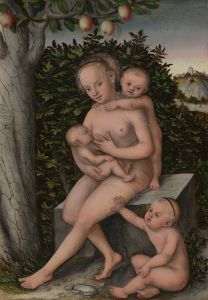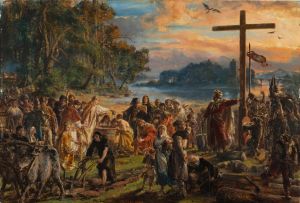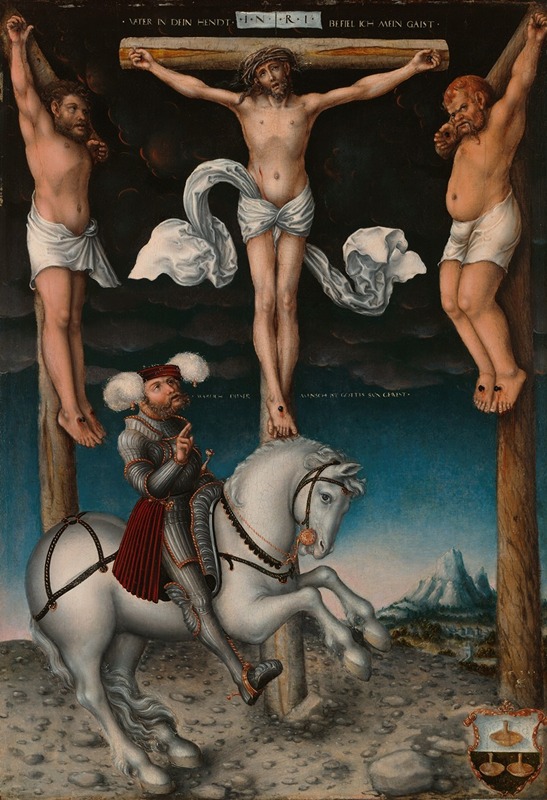
The Crucifixion with the Converted Centurion
A hand-painted replica of Lucas Cranach the Elder’s masterpiece The Crucifixion with the Converted Centurion, meticulously crafted by professional artists to capture the true essence of the original. Each piece is created with museum-quality canvas and rare mineral pigments, carefully painted by experienced artists with delicate brushstrokes and rich, layered colors to perfectly recreate the texture of the original artwork. Unlike machine-printed reproductions, this hand-painted version brings the painting to life, infused with the artist’s emotions and skill in every stroke. Whether for personal collection or home decoration, it instantly elevates the artistic atmosphere of any space.
Lucas Cranach the Elder's The Crucifixion with the Converted Centurion is a painting that depicts the biblical scene of the crucifixion of Jesus Christ, with a particular focus on the moment when the Roman centurion acknowledges Jesus as the Son of God. This artwork is attributed to Lucas Cranach the Elder, a prominent German Renaissance painter and printmaker known for his religious works, portraits, and mythological scenes. Cranach was a close associate of Martin Luther and played a significant role in the visual culture of the Protestant Reformation.
The painting portrays the crucifixion with Jesus on the cross at the center, flanked by the two thieves who were crucified alongside him. Below the cross, various figures are depicted, including the Virgin Mary, Saint John the Evangelist, and other mourners. The Roman centurion, traditionally identified as Longinus, is shown in a moment of conversion, pointing toward Jesus and expressing his recognition of Christ's divine nature. This moment is derived from the Gospel accounts, particularly in Matthew 27:54, where the centurion declares, "Truly this was the Son of God."
Cranach's work is characterized by its detailed composition, vibrant colors, and emotional intensity. The figures are rendered with a combination of realism and stylization typical of Cranach's style, and the landscape in the background often includes dramatic skies that enhance the spiritual and emotional impact of the scene. The painting reflects the theological themes of the time, emphasizing faith and the recognition of Christ's divinity.
The exact date of the painting is not definitively known, but it is generally attributed to Cranach's mature period, during which he produced numerous works with religious themes. As with many of Cranach's works, this painting may have been commissioned for a church or private devotion, reflecting the widespread demand for religious art during the Reformation era.
The painting is part of Cranach's broader body of work, which includes many depictions of the crucifixion and other scenes from the life of Christ. His ability to convey complex theological ideas through accessible and emotionally resonant imagery made him one of the most influential artists of his time.
The current location of The Crucifixion with the Converted Centurion is not specified in this summary, as the painting may be housed in a museum, private collection, or other institution. Further research into specific catalogues or museum records may provide additional details about its provenance and history.





